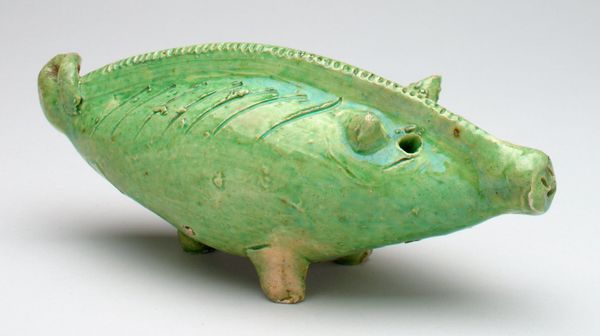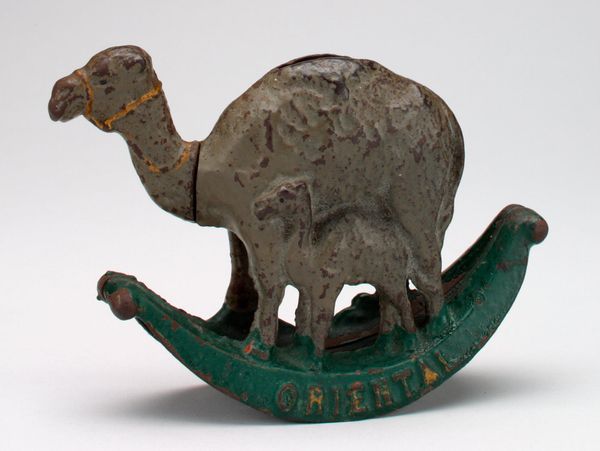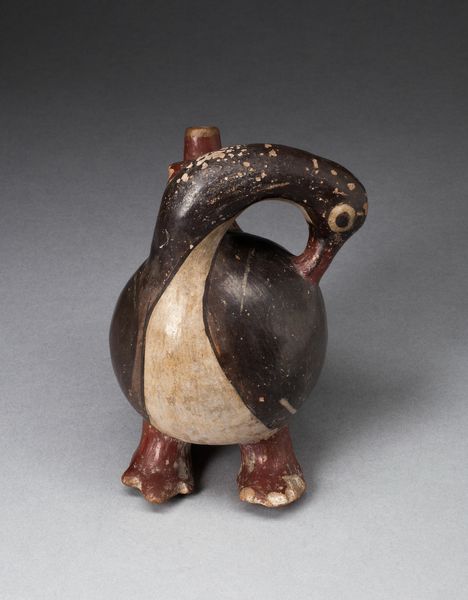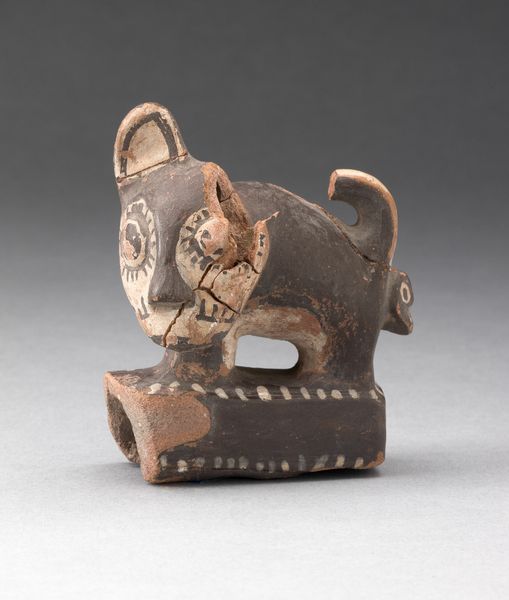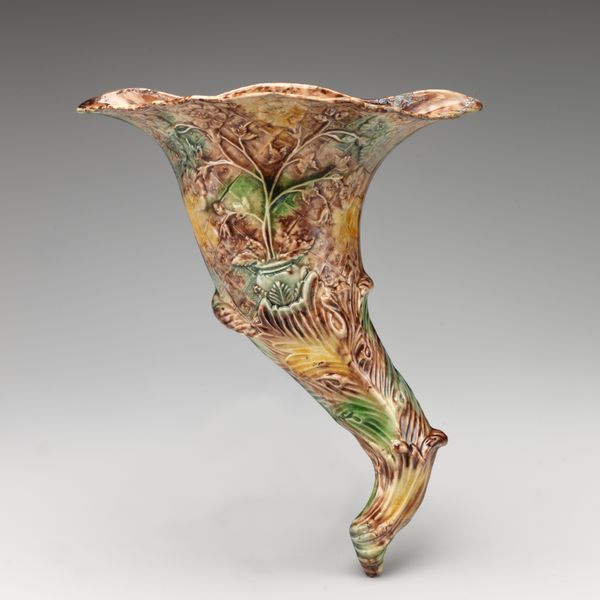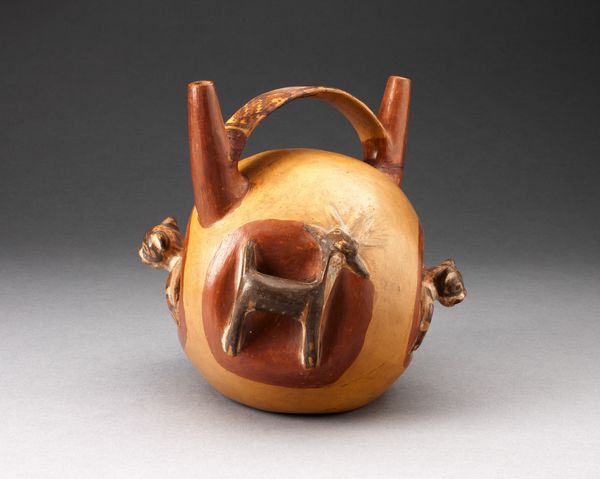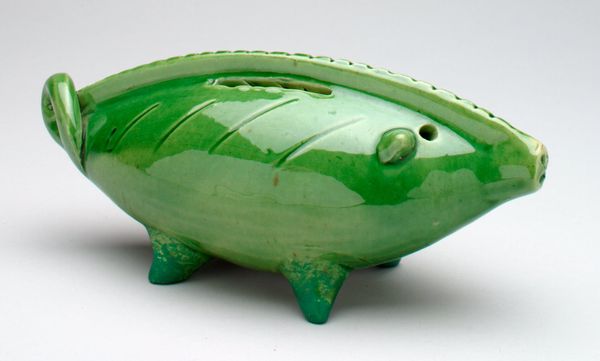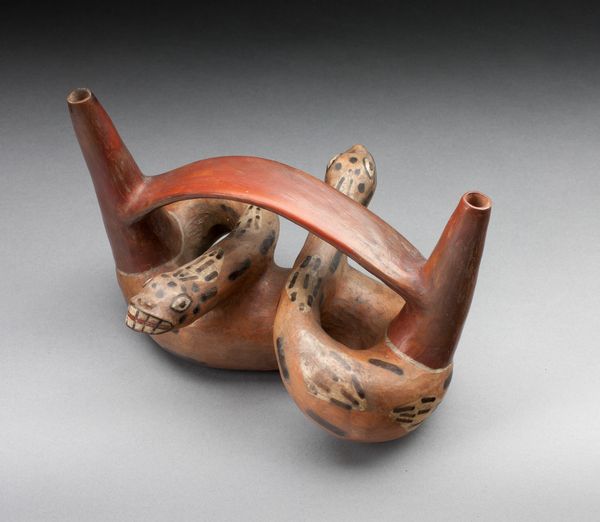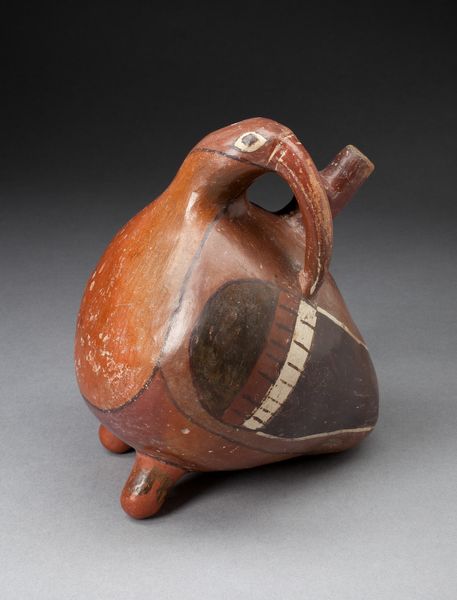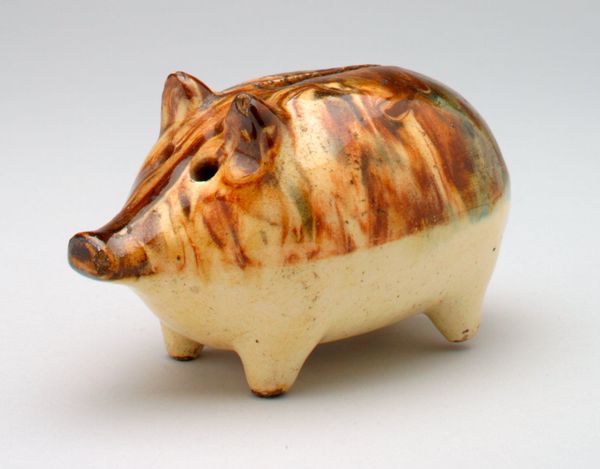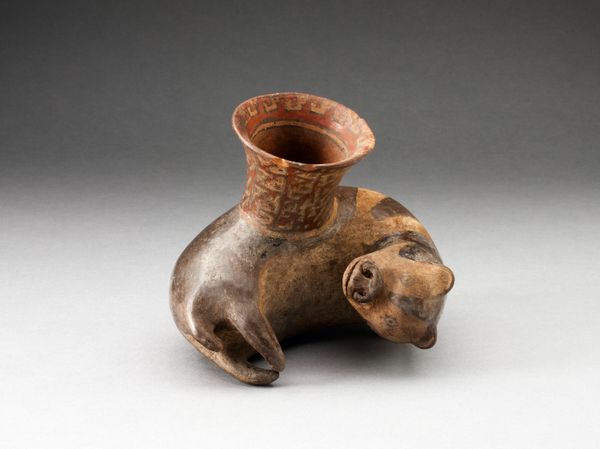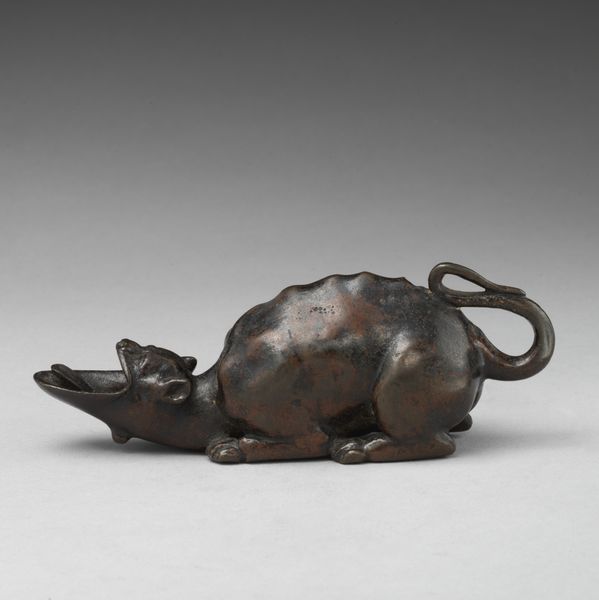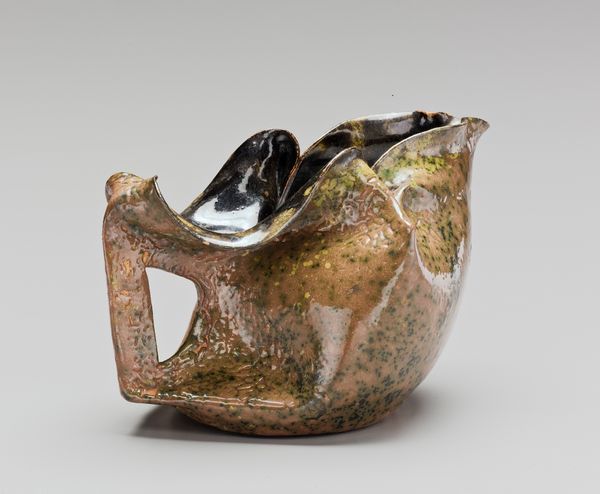
ceramic, sculpture
#
ceramic
#
figuration
#
folk-art
#
sculpture
Dimensions: 3 9/16 x 3 3/4 x 4 9/16 in. (9.05 x 9.53 x 11.59 cm)
Copyright: Public Domain
Curator: I'm drawn to this charming, somewhat enigmatic piece of folk art: a ceramic pig still bank dating back to around 1900, currently housed at the Minneapolis Institute of Art. Editor: Well, my initial impression is that it’s remarkably playful! The vibrant stripes and simple form give it such a jaunty air, as though it might just trot away. Curator: Indeed, its form invites interpretation. Think about the historical moment; at the turn of the century, agrarian life was still a dominant reality for many, embodying cycles of sustenance, and moreover capital—consider what it meant to keep and grow wealth at this time in America. The symbolism of the pig itself—often associated with both prosperity and gluttony—gains nuance when contextualized within those socio-economic conditions. Editor: Absolutely. And the ceramic material – how does that play into your interpretation? I am very drawn to the way the glazing seems to be distributed – notice how it pools to give the figure depth in some areas while giving it an almost cartoon flatness in others. I would posit it almost renders a kind of faux naïveté, masking what you've described. Curator: Exactly! The way the artist, alas anonymous to us, manipulates these tensions in the glaze actually amplifies this central push and pull of capitalism, production, consumption, and innocence. The formal construction becomes part of the object's broader political narrative. Editor: It makes me wonder if there's a subversive intention lurking beneath the guise of this folk art object. Perhaps there is commentary on the societal attitudes towards greed or surplus? Curator: It's likely we're both reaching a valid interpretation through our analysis here. I feel quite grounded in how we can weave identity, gender, race, and politics to appreciate objects of material culture in our society. Editor: And it has allowed us, through the study of form and careful looking, to also glimpse possible underlying layers in such objects of material culture, too.
Comments
No comments
Be the first to comment and join the conversation on the ultimate creative platform.
